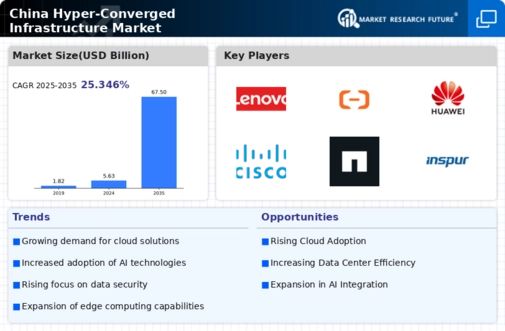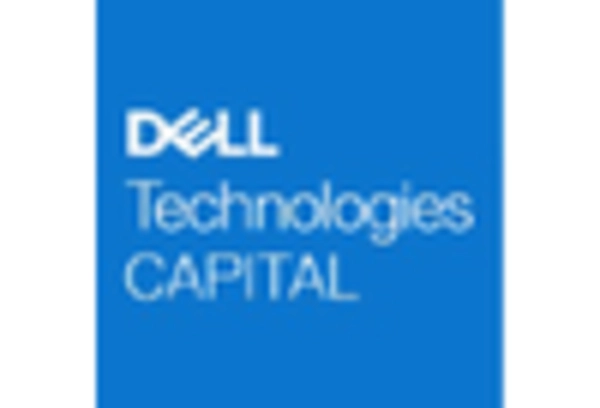Growing Focus on Data Analytics
The hyper converged-infrastructure market in China is significantly influenced by the growing focus on data analytics. As organizations generate vast amounts of data, the need for efficient data processing and storage solutions becomes paramount. Hyper converged systems offer the necessary capabilities to manage and analyze data effectively, enabling businesses to derive actionable insights. Recent market analysis suggests that the demand for data analytics solutions is expected to increase by 30% in the coming years, further driving the adoption of hyper converged infrastructure. This trend positions the hyper converged-infrastructure market as a critical enabler of data-driven decision-making in various sectors.
Government Initiatives and Support
The Chinese government plays a pivotal role in fostering the hyper converged-infrastructure market through various initiatives and support programs. Policies aimed at promoting digital transformation and smart city projects are encouraging enterprises to adopt advanced IT solutions. The government has allocated substantial funding, estimated at around $10 billion, to support the development of cloud computing and data centers, which are integral to hyper converged systems. This backing not only stimulates market growth but also enhances the overall technological landscape in China. As a result, the hyper converged-infrastructure market is likely to see increased investments and innovations, further solidifying its position in the IT ecosystem.
Shift Towards Remote Work Solutions
The hyper converged-infrastructure market in China is witnessing a shift towards remote work solutions, driven by the evolving workplace dynamics. Organizations are increasingly adopting hyper converged systems to facilitate remote access to applications and data, ensuring business continuity and operational efficiency. This trend is particularly relevant as companies seek to provide seamless experiences for their remote workforce. Recent statistics indicate that approximately 60% of enterprises in China are investing in hyper converged solutions to support their remote work strategies. Consequently, the hyper converged-infrastructure market is likely to expand as businesses prioritize flexibility and scalability in their IT infrastructure.
Rising Demand for Integrated Solutions
The hyper converged-infrastructure market in China experiences a notable surge in demand for integrated solutions. Organizations are increasingly seeking to streamline their IT operations, which leads to a preference for hyper converged systems that combine storage, computing, and networking into a single platform. This trend is driven by the need for efficiency and cost reduction, as businesses aim to minimize operational complexities. According to recent data, the market is projected to grow at a CAGR of approximately 25% over the next five years, indicating a robust appetite for these solutions. The hyper converged-infrastructure market is thus positioned to benefit from this rising demand, as companies look to enhance their agility and responsiveness in a competitive landscape.
Emergence of Artificial Intelligence Technologies
The emergence of artificial intelligence (AI) technologies is reshaping the hyper converged-infrastructure market in China. Organizations are increasingly integrating AI capabilities into their IT infrastructure to enhance operational efficiency and automate processes. Hyper converged systems provide the necessary framework to support AI workloads, allowing businesses to leverage machine learning and data processing capabilities. As AI adoption continues to rise, the hyper converged-infrastructure market is likely to experience substantial growth, with projections indicating a potential increase in market size by 40% over the next few years. This trend underscores the importance of hyper converged solutions in facilitating advanced technological applications.
















Leave a Comment